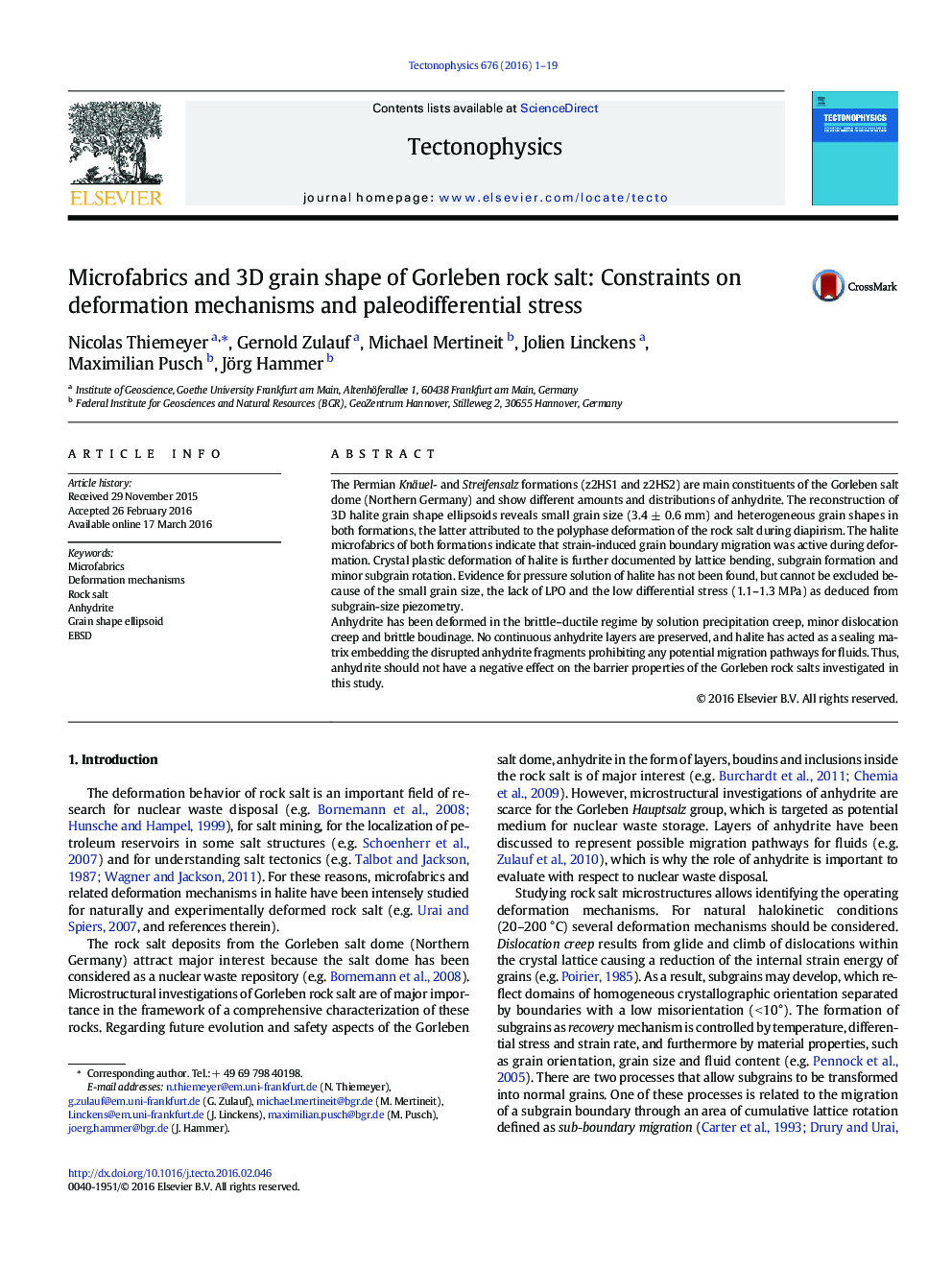| Article ID | Journal | Published Year | Pages | File Type |
|---|---|---|---|---|
| 6433403 | Tectonophysics | 2016 | 19 Pages |
â¢We present comprehensive microstructural analyses of Gorleben rock salt.â¢The Gorleben salt formations show different macro- but similar microfabrics.â¢3D halite grain shape ellipsoids are reconstructed revealing heterogeneous fabrics.â¢Anhydrite had no impact on the barrier properties of the rock salt.â¢Viscous creep of halite ensured the re-establishing of the sealing capacity.
The Permian Knäuel- and Streifensalz formations (z2HS1 and z2HS2) are main constituents of the Gorleben salt dome (Northern Germany) and show different amounts and distributions of anhydrite. The reconstruction of 3D halite grain shape ellipsoids reveals small grain size (3.4 ± 0.6 mm) and heterogeneous grain shapes in both formations, the latter attributed to the polyphase deformation of the rock salt during diapirism. The halite microfabrics of both formations indicate that strain-induced grain boundary migration was active during deformation. Crystal plastic deformation of halite is further documented by lattice bending, subgrain formation and minor subgrain rotation. Evidence for pressure solution of halite has not been found, but cannot be excluded because of the small grain size, the lack of LPO and the low differential stress (1.1-1.3 MPa) as deduced from subgrain-size piezometry.Anhydrite has been deformed in the brittle-ductile regime by solution precipitation creep, minor dislocation creep and brittle boudinage. No continuous anhydrite layers are preserved, and halite has acted as a sealing matrix embedding the disrupted anhydrite fragments prohibiting any potential migration pathways for fluids. Thus, anhydrite should not have a negative effect on the barrier properties of the Gorleben rock salts investigated in this study.
